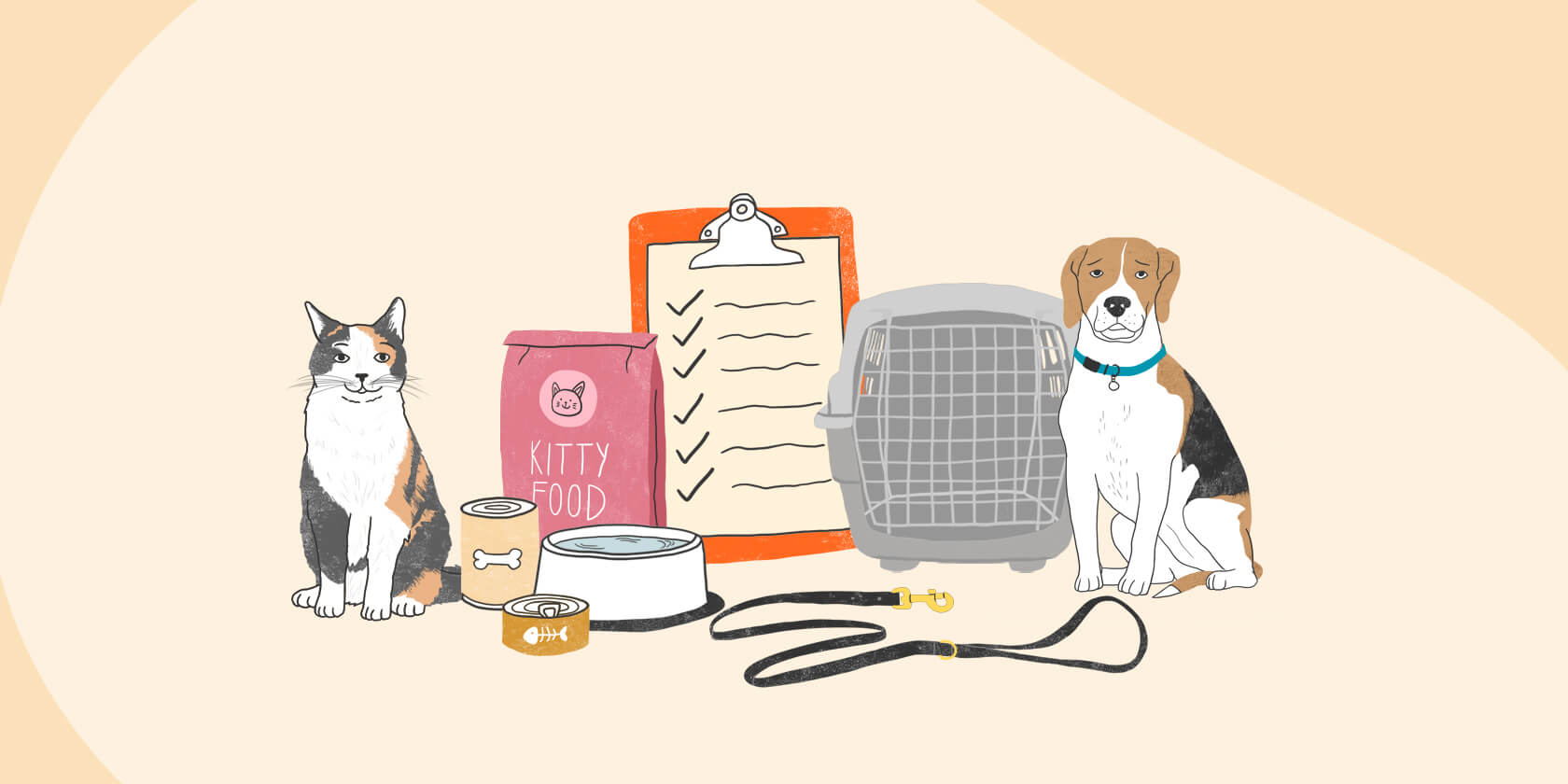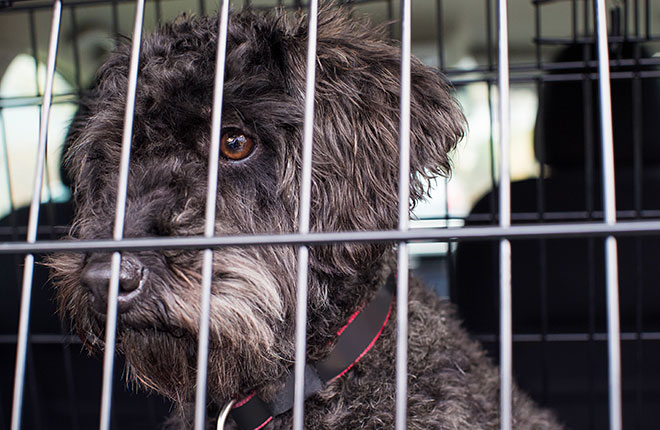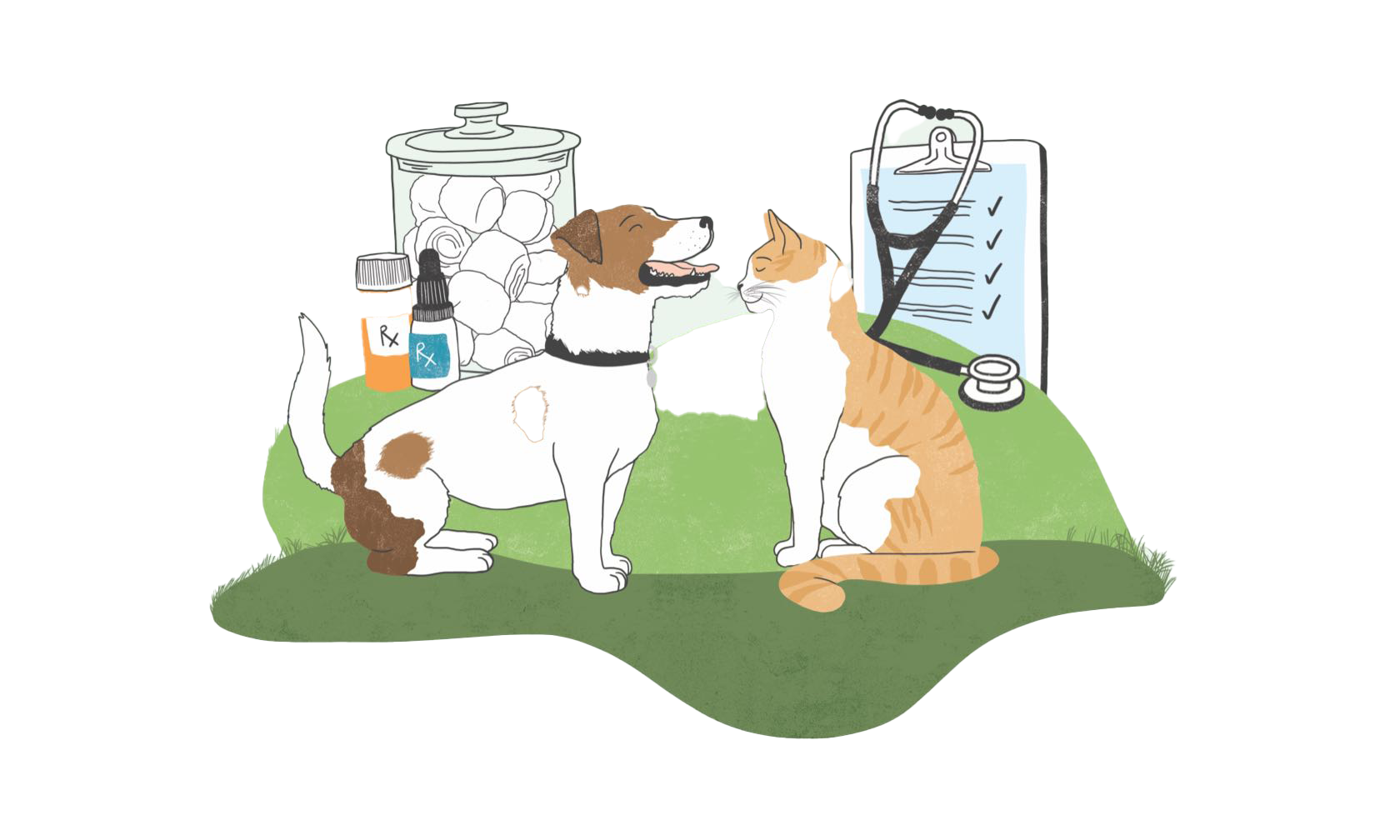You never know when disaster will strike. Each year, hurricanes, wildfires, earthquakes, tornadoes, and other natural disasters cause people to flee their homes in search of safety. In case of a disaster, it’s important to create a disaster preparedness plan for your pets.
Make a Plan So Your Pet Is Ready for Anything
A disaster preparedness plan includes steps for before, during, and after the disaster.
If your family needs to “shelter in place” during a disaster like a tornado, do not leave your pets outdoors. Designate a safe place in your home for your pets, preferably the same area where you’re staying. An interior room without windows is the safest place for pets. Try to introduce them to this place before a storm or other disaster and make sure there’s a comfortable bed, a favorite toy, and a litter box for cats so they feel safe and at home.
If you’re evacuated from your home, do not leave your pets behind — if it isn’t safe for your family, it isn’t safe for your pets. Evacuating with pets can be stressful, so prepare an evacuation plan ahead of time.
- Identify a family member that is responsible for the pet – this person will get the pet, the food and water, and the disaster pack.
- Know of a few safe places for your pets to go if you need to evacuate. This can be a friend or family member’s house, a boarding kennel in your evacuation area, or animal shelters that provide emergency shelter or foster services.
- Find pet-friendly lodging along your evacuation route (keep a list of pet-friendly hotel chains as a start).
- Ask family or friends outside of your area if they would be willing to take in you and your pets in the event of an evacuation.
Follow American Humane’s disaster prep plan fact sheet for pets with ideas to help build your plan from start to finish.

Have a Disaster Pack for Your Pet
This pack contains emergency rations and necessary gear for your pet to shelter in place or evacuate with you. You can add these supplies to the one you have for yourself. Essential items include:
Food and Water
At least 1 weeks’ worth of water and food for each pet, bowls, and a can opener (if using canned food). It’s also a good idea to have a way to sanitize water, like tablets or a filtration system — you don’t want your pets drinking from any flood waters, as there are all kinds of bacteria and parasites in there.
Potty Supplies
A disaster won’t stop your pet from having to go to the bathroom.
- For cats: litter box, litter, scooper, and garbage bags.
- For dogs: poop bags and absorbent potty pads.
Sturdy Carrier or Crate, Harness, and Leash
These will allow you to transport your cat or dog safely and ensure that they are secure.
Medications
Make sure you have any medications that have been prescribed for your pets. Take a 1-2 week supply. This includes:
- A flea and tick preventative. A 1-month supply ensures there is no lapse in parasite protection.
- Heartworm prevention. Protecting your pet from heartworm is especially important after hurricanes and flooding. If your pet is on oral heartworm medication, make sure you have a 1-month supply on-hand.
Current Photo and Description of Pets
In case your pet is lost during the chaos these items will help you to reunite with them. Posting these photos on social media during a disaster can also help in reuniting with them.
Copies of Medical Records
Since your veterinary clinic may also be affected by the evacuation, bring your medical records, including vaccinations, with you. This way, you’ll be prepared if you need to seek medical attention for your pet from a different veterinary clinic.
Temporary Identification Tags
Use these to write the address of where you’re staying during the evacuation.
More Ways To Be Prepared for a Disaster
Get Your Pet Microchipped
Microchips increase the likelihood that your pet will be returned to you. If your pet happens to lose their collar with identification in the chaos, a scan of their microchip gives quick access to your contact information. If your pet is already microchipped, make sure your contact information is up-to-date with the registry company and ensure that the chip is still present and working (your vet’s office can check with a quick scan).
Know First Aid Basics
Find and take a pet first-aid class. Not sure where they’re offered? Check with your local animal shelter or animal ER — classes are often taught in these locations. The Red Cross also offers a short online course and has an app that walks you through giving your pet first aid so you can help in an emergency.
Once you have your plan created, make sure that you have everything in place and practice the plan so you’re ready to act should a disaster happen. Often you have to move quickly, so practicing helps you act fast when disaster strikes.
ZPC-00238R2



